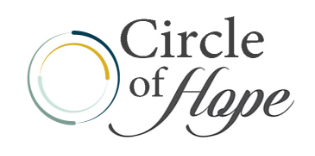
Cocaine is a dangerous drug, but even with all the warnings, a sizable portion of the population is addicted to it. SAMHSA notes that 5.5 million people were cocaine users as of 2019. Over the last few years, this statistic would have increased due to added pressures of society. Addiction and dependency on the substance set in quickly. Unfortunately, the social fallout from cocaine addiction is what causes most of the negative impact. Cocaine addiction drives people to make bad choices in their search for the drugs or resources to acquire them.
Why does cocaine cause such a response in people? Cocaine is a stimulant developed from an extract of the coca plant indigenous to South America. It was seen as a wonder drug used to help people cope with a slew of problems in the past. At one point, it was even included in soft drinks. However, the drug’s addictiveness came to prominence, and researchers quickly realized that it was doing more harm than good. Banning the substance made it illegal for purchase, but that didn’t stop cartels from South America from bringing it into the country and causing a severe social problem. The root of that problem is cocaine dependency.
Cocaine Dependency
When someone takes cocaine, the drug interacts with certain parts of their brain. When a person takes cocaine, it stimulates the brain to produce massive amounts of dopamine. As many high school biology students can attest, dopamine is known as the “feel-good” chemical. A person’s brain uses it to reward a job well done, to encourage them to keep doing positive things. Cocaine short-circuits this reward pathway, causing the brain to dump a lot of dopamine at once, creating an immense feeling of euphoria. Unfortunately, nothing that a person does normally can make that same amount of dopamine. A person who takes cocaine loses interest in most other things because the rewards are just not worth the effort. The massive dopamine dump also leads to a person’s brain chemistry changing.
After the first time a person uses cocaine, the brain adapts to the flood of dopamine and soon starts needing the drug to function normally. Researchers term this outcome “dependence.” When a person becomes dependent on cocaine, their brains change physically, requiring the drug to be present. Dependence usually leads to addiction. Addiction is a brain disease where a person can no longer make logical decisions about the drug. Addiction relies on the body’s dependence on cocaine and can lead to many negative consequences for those suffering from substance use disorder and those close to them. Eventually, a person comes to a point where they decide to quit the substance. When this happens, withdrawal occurs, and it may be intense for anyone who isn’t ready for the symptoms.
What Is Cocaine Withdrawal
As mentioned before, dependence and addiction change the brain’s structure. One of the downsides of this change is that the person needs the substance to function normally, but what happens when they don’t get that dose of cocaine? A series of symptoms sets in known as cocaine withdrawal symptoms. Withdrawal symptoms may vary in intensity and duration, depending on how heavy the person was and how long ago their last dose was. Cocaine withdrawal is a little bit like an alcohol hangover. The body, having grown used to having the cocaine, now demands that the person take it. The symptoms are a clear sign of how necessary the drug has become to the person’s everyday life.
Cocaine withdrawal can be divided up into three distinct stages. These are:
- The Crash: Because cocaine is used up quickly, this phase happens soon after someone quits the drug. A person may start craving the drug at this phase, but they’re more likely to feel anxious, tired, exhausted, and irritable. They may also display dysphoric symptoms.
- Onset of Withdrawal: At this stage, the person will start craving the drug more intensely. There is a much higher chance of relapse at this phase, and the person may start going to great lengths just to get their hands on the substance
- The Extinction: There are sporadic cravings at this stage, but the significant, intense spikes for the drug have almost all dissipated. Individuals who go through rehab can usually spot the signs that might prompt them to use the substance and deal with them.
Each person’s withdrawal is different. Common to all withdrawals are symptoms, but a person going through withdrawal may have all, some, or none of them, depending on how intense their addiction has been.
Cocaine Withdrawal Symptoms
Most substances have serious physical withdrawal symptoms. However, many cocaine withdrawal symptoms tend to be more psychological. These symptoms may occur throughout withdrawal but are more pronounced at the onset of the withdrawal stage (see above). Among the symptoms of withdrawal that a person recovering from cocaine dependence may encounter are:
- Increased appetite
- Craving for cocaine
- Chills, tremors, nerve pain, other aches that aren’t physical symptoms but are mostly psychosomatic
- Vivid but unpleasant dreams
- Depression, anxiety, or both
- Suicidal thoughts or actions
- Anhedonia (the inability to feel pleasure)
- Inability to get sexually aroused
- Restlessness
- Exhaustion
- Fatigue
- Difficulty concentrating and slowed thinking
The intensity of these symptoms vary but usually begins very muted at the start of the withdrawal process. The initial crash phase usually sees an individual not wanting the substance. However, when the onset phase begins, a person’s cravings proliferate along with the intensity of symptoms. The second phase usually lasts for up to four weeks, but at the end of it, a person’s hunger for the substance and their withdrawal symptoms mostly dissipate. Cravings may continue for years intermittently, but the withdrawal symptoms are usually gone. These symptoms occur as the body’s way of convincing a person to keep taking the drug.
Treating Stimulant Withdrawal
Cocaine is a stimulant, and treating withdrawal is similar in the case of many stimulants. Stimulant withdrawal treatment starts with detox. Detoxification is controlled stimulant withdrawal, usually supervised by medical personnel. Most detox centers will go through a series of questions with a person to better plan for their withdrawal process. Some individuals believe that they would be better off detoxing at home. While this is an option, too many unplanned factors could negatively impact the withdrawal process. At the second stage of withdrawal, cravings become so intense that a person might relapse without even realizing they’re doing so.
Supervised withdrawal is the best way to deal with stimulants. The medical staff ensures that if symptoms become intense and life-threatening, the person will have the care they need immediately. Sometimes, this is crucial to saving the life of the recovering person. Additionally, detox centers tend to keep their patients isolated from the world around them for the duration of withdrawal. By doing so, they reduce the chance of relapse when cravings become too intense to deal with. Unfortunately, no medication can be used to mitigate the intensity of cocaine withdrawal symptoms.
Cocaine Withdrawal and Suicide
The CDC mentions that suicide is the 10th leading cause of death in the US. In individuals suffering from cocaine withdrawal, intense feelings of depression may feed into suicidal thoughts. Depression combined with a substance use disorder more often than not leads to suicide in many individuals. Typically, when a person takes a stimulant such as cocaine, they feel more “alive” when they are on the drug. This feeling of euphoria comes from the massive dopamine dump that comes from the person’s brain. When a person experiences the crash, feeling of inadequacy and depression usually arrive with it. Withdrawal is a final farewell to the feelings that cocaine would offer to a person, and the feelings of depression become more pronounced at that point.
It is not uncommon for cocaine users to experience short bouts of suicidal thoughts while on the drug. However, when quitting the substance, these feelings intensify as part of the withdrawal symptoms. The hopelessness of their situation preys on their conscience, and suicide seems like the only way out for them. This risk is one of the most prevalent ones for individuals detoxing at home. That is why medical supervision is necessary for an individual who’s planning on quitting cocaine.
Medical Detox for Cocaine
Detoxification is a method of controlled withdrawal. In many cases, these withdrawal procedures taper the dosage of cocaine over time to reduce the intensity of symptoms. Medical detox allows medical personnel to be present and help in case things go wrong with the withdrawal process. As mentioned before, withdrawal from cocaine can lead to severe mental symptoms, even though the physical symptoms are usually less pronounced. Unlike many other drugs, there are no severe physical signs of withdrawal. Many physical symptoms are psychosomatic in nature – developed by a person’s brain to stop them from quitting the substance.
However, just because these symptoms are developed as a defense mechanism doesn’t mean that they can’t be dangerous in their own right. The more insidious problem that individuals recovering from cocaine addiction may need to deal with is the suicidal thoughts that result from withdrawal. Detoxing at home is even more dangerous with this potential fallout. Additionally, medical detox can help a person have less intense withdrawal symptoms and help them deal with the urges they will have, preventing relapse.
Inpatient Treatment for Withdrawal Symptoms
Inpatient treatment is a methodology that allows a person to focus on getting over their dependence on a substance. At inpatient facilities, a person has access to detox and therapy over a certain period. Professionally trained medical staff can help them cope with withdrawal symptoms and even give them the tools to avoid relapse when they return to their lives. Inpatient facilities focus on helping a person by giving them the support they need to overcome their addiction. They provide a structured activity schedule that allows a person to relearn developing routines and habits to return to a post-addiction life.
Inpatient treatment also allows recovering persons the benefit of professional counselors and therapists. Among the most successful therapies that have been used in inpatient treatment centers for cocaine, recovery is cognitive-behavioral therapy (CBT). CBT allows a person to recognize the negative thoughts that give rise to addictive behaviors. Once they can spot those thoughts, they can avoid the automatic response that they lead to. These methods are crucial in helping a person avoid relapse when they leave the facility. Inpatient stays can range between thirty and one hundred and twenty days, depending on the level of support the recovering individual needs.
Post-Acute Withdrawal Symptoms
A typical long-term withdrawal problem that isn’t discussed very much is Post Acute Withdrawal Syndrome or PAWS. Typically, individuals who have spent a long time addicted to cocaine or have consumed a lot of the substance in their lifetime will suffer from PAWS. Most of the symptoms associated with cocaine are psychological, making it a tough substance to leave behind. PAWS refers to psychological symptoms that persist for a long time after the person has gone through detox. The symptoms associated with PAWS are never physical. These mental holdovers from cocaine withdrawal include depression and anxiety.
The continued mental health impacts of cocaine withdrawal can lead to severe negative fallout. PAWS might even drive a person towards suicide, even years after they have left the substance behind. Long-term support can come in the form of therapy or support groups. Many individuals who have recovered from cocaine addiction rely on support groups to help them deal with the long-term effects of PAWS. These groups are usually made up of a broad group of individuals, each with their own stories about addiction and dependence. The sense of support and community is a valuable tool in staving off the feelings of loneliness that typically accompany depressive episodes.
Lasting Abstinence from Cocaine
Quitting cocaine takes a lot of willpower, but it can end in relapse without the proper support. Circle of Hope provides that support for every patient who enters our facility. Our inpatient treatment help recovering persons focus on their health and well-being without worrying about the world outside. Our trained medical staff provides the tools a recovering individual needs to remain abstinent from cocaine over the long term. Give us a call today to learn more about our methods and book your first visit. We’ll be looking forward to helping you on the road to recovery.

